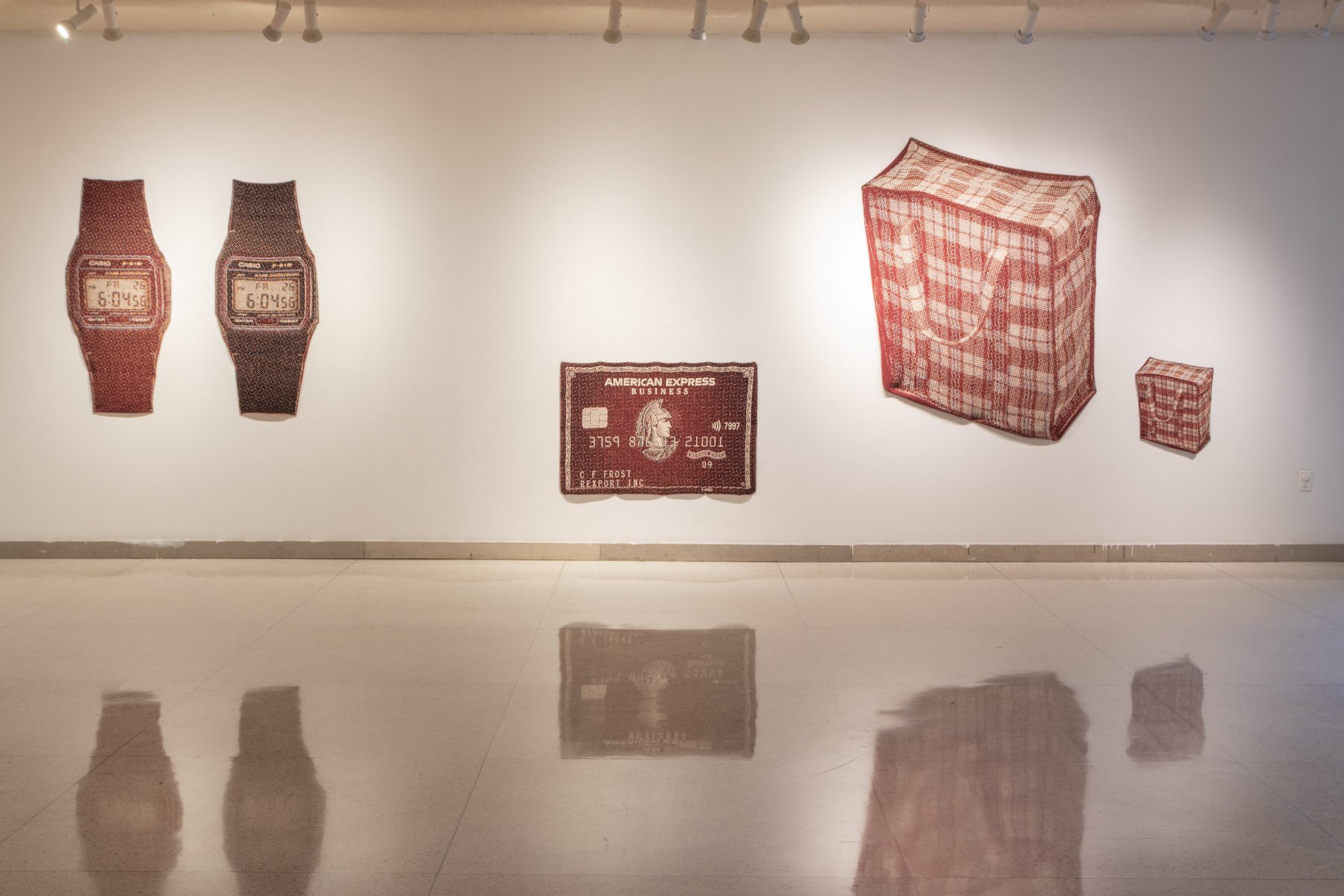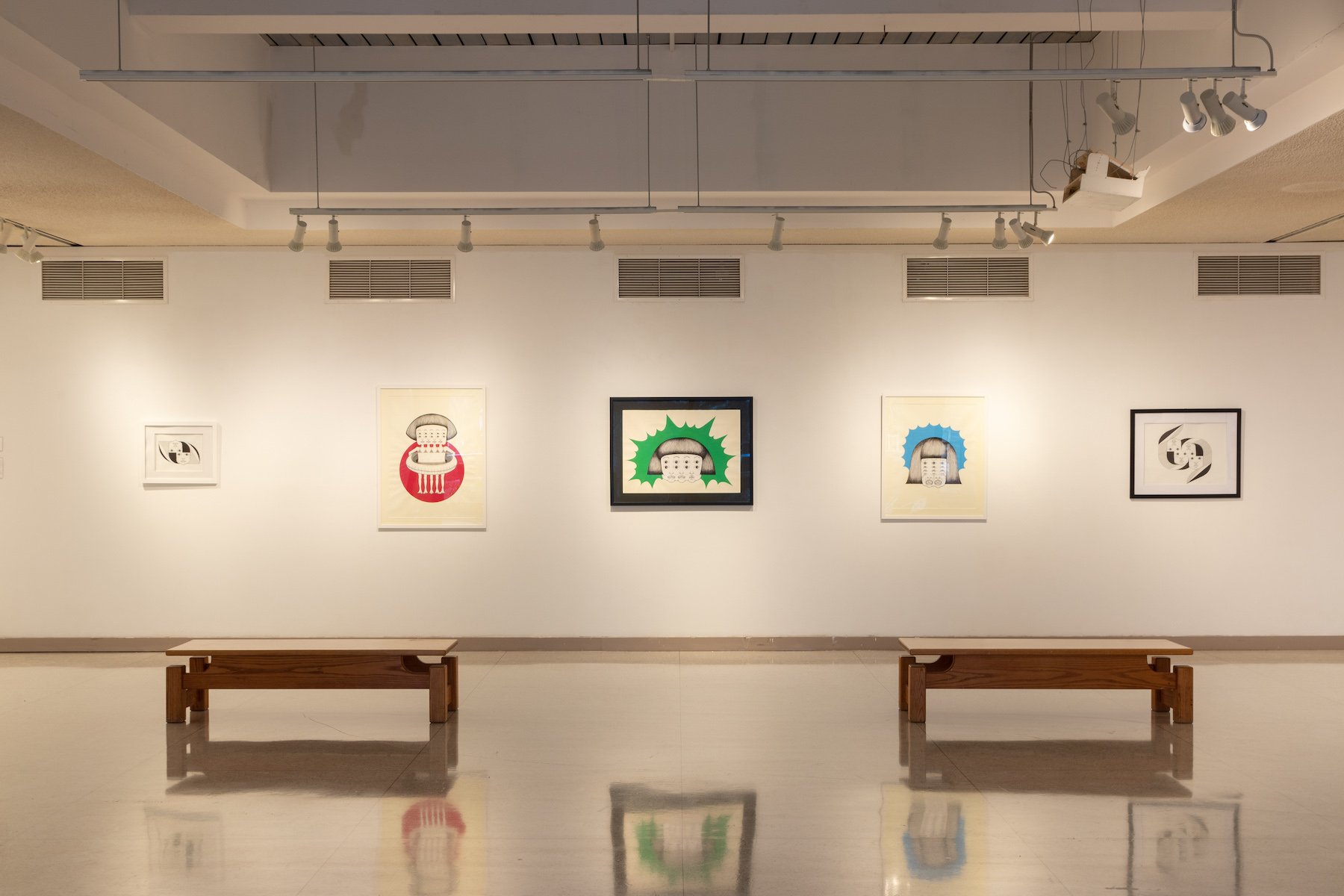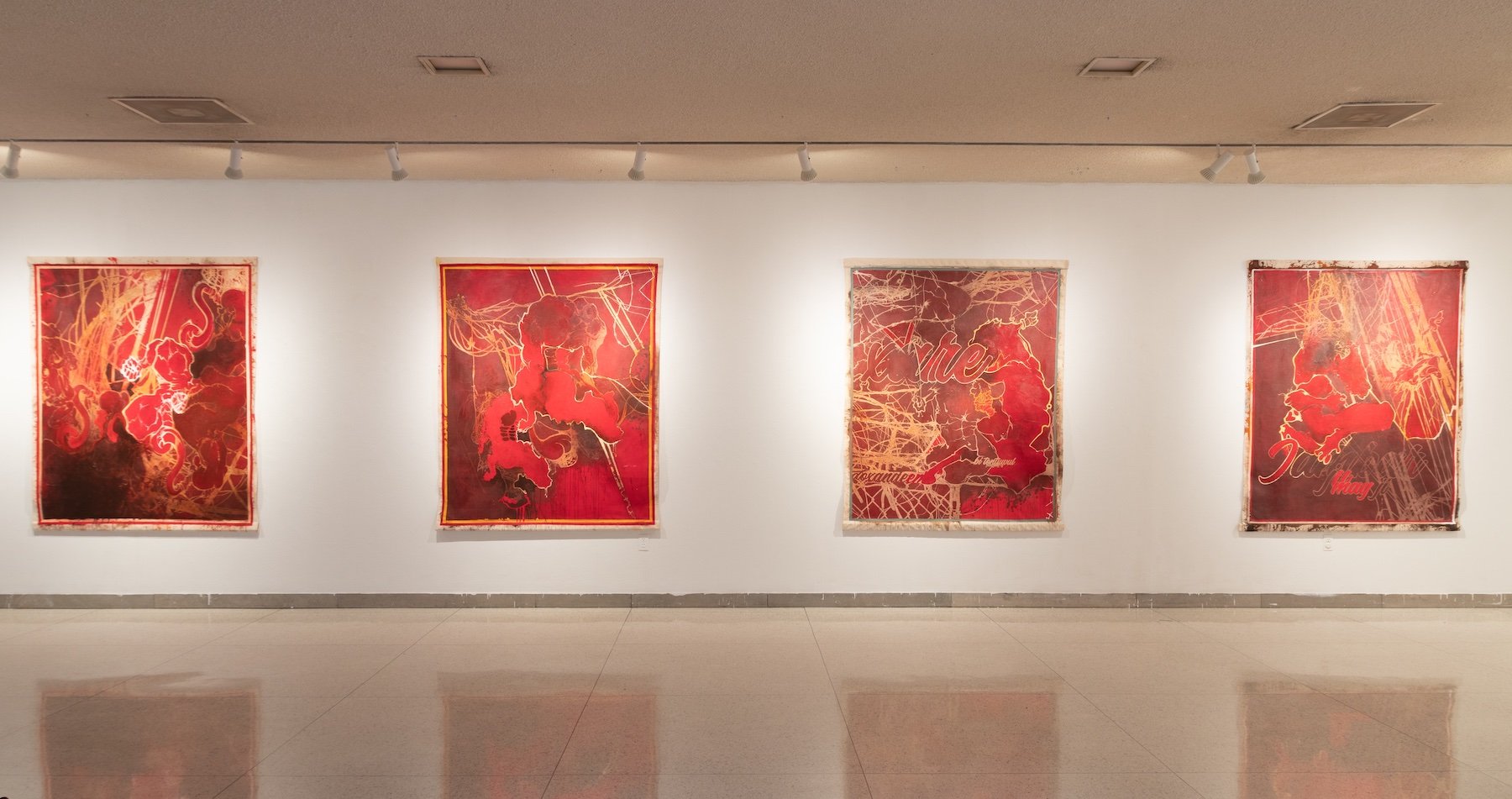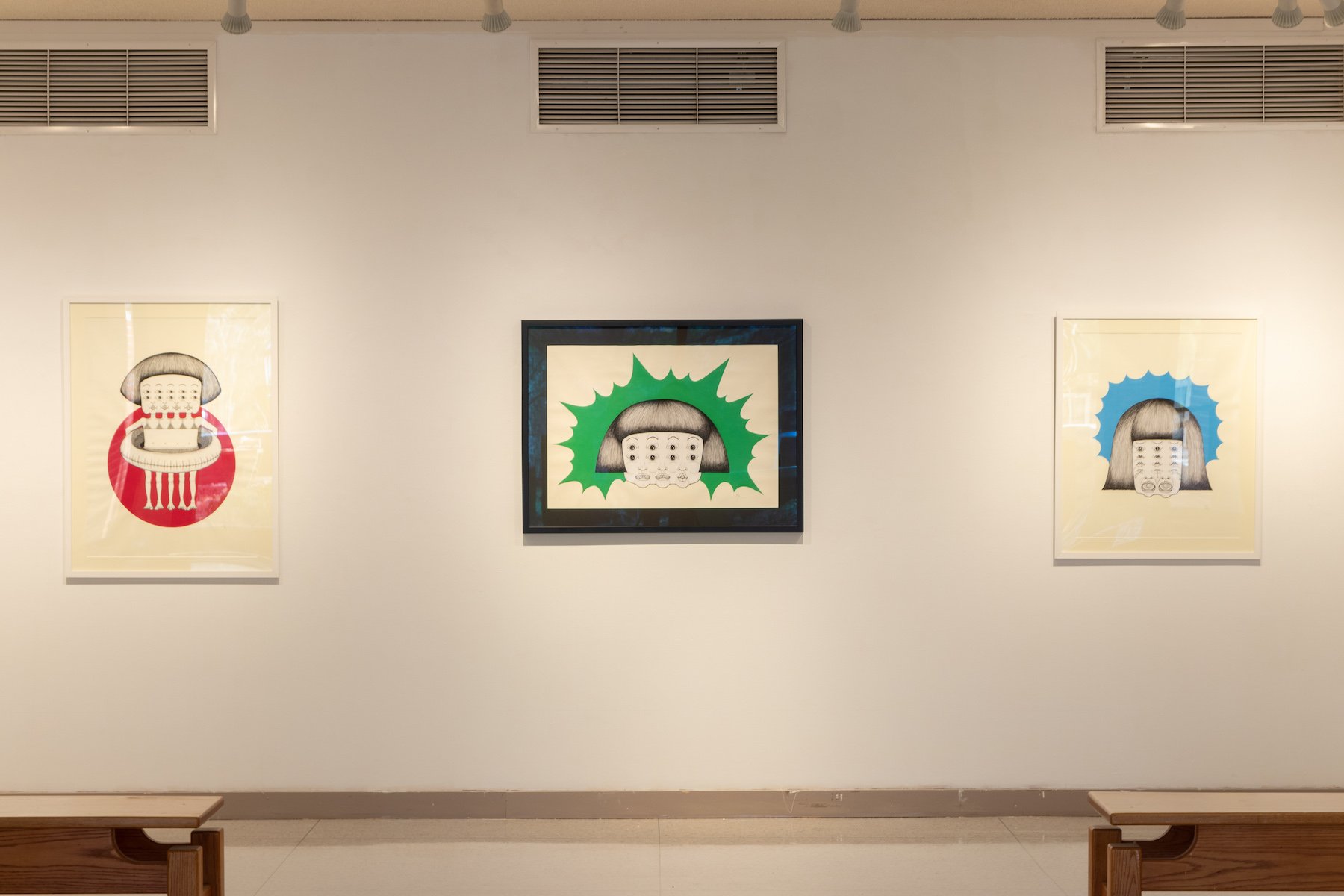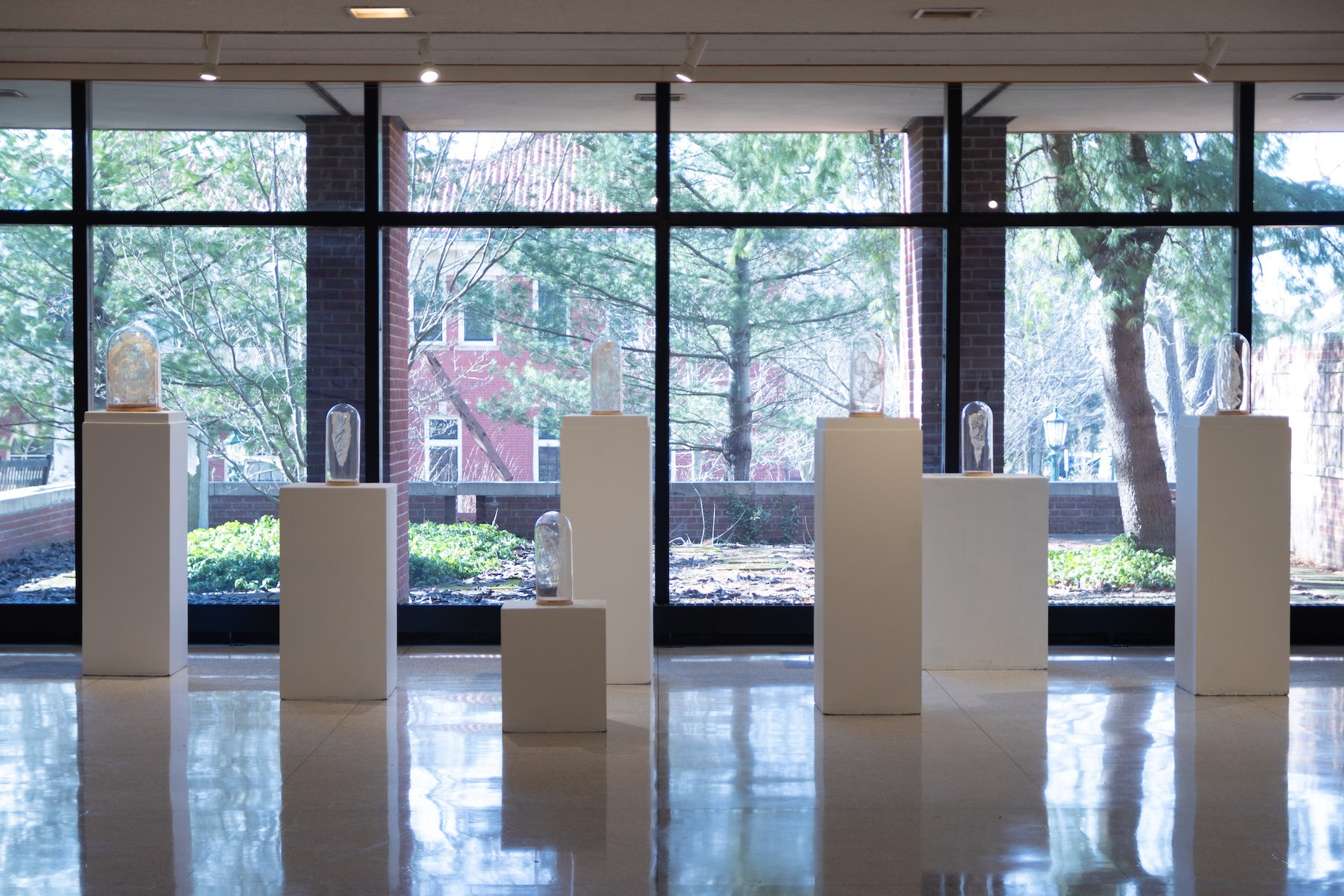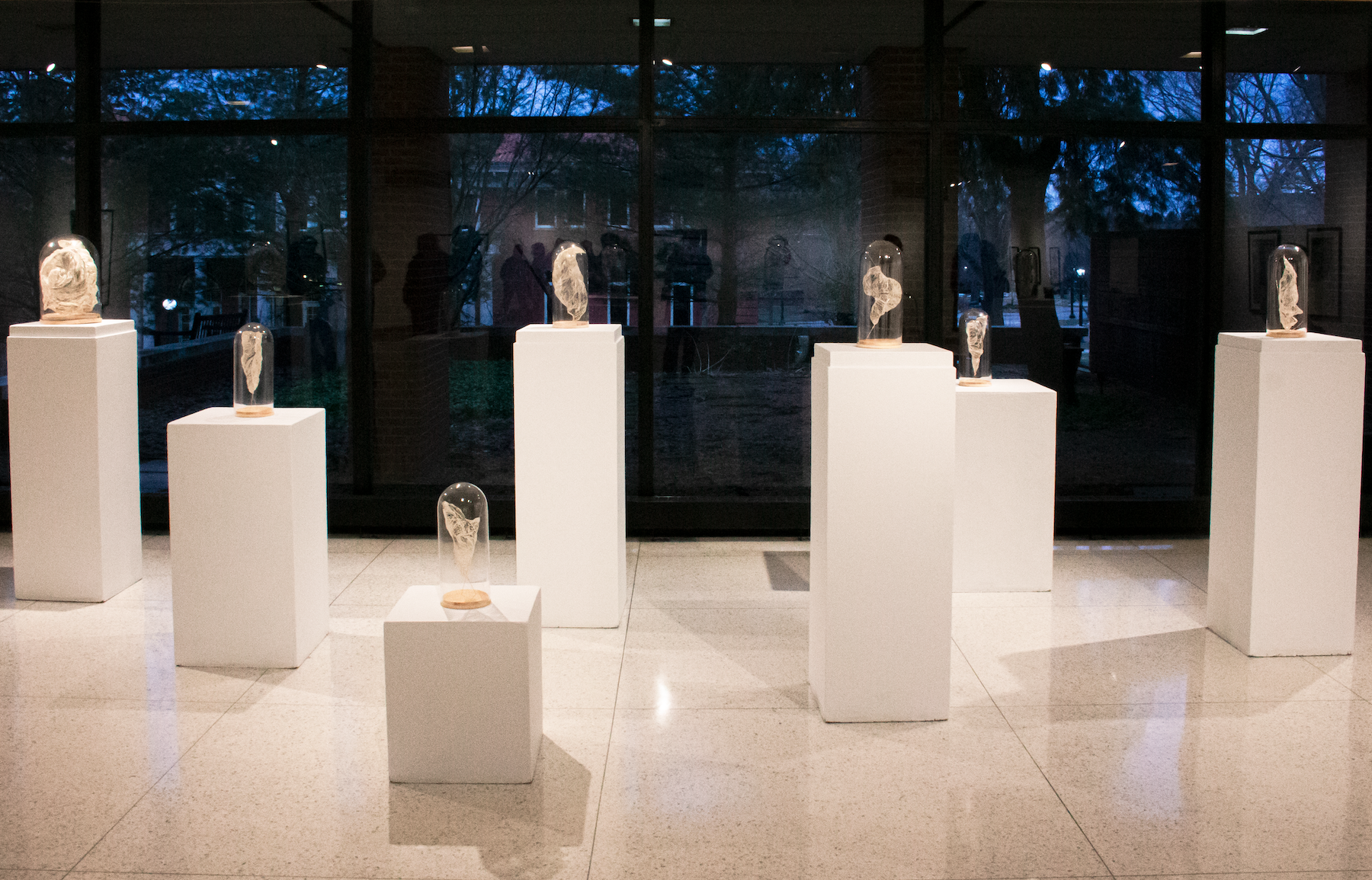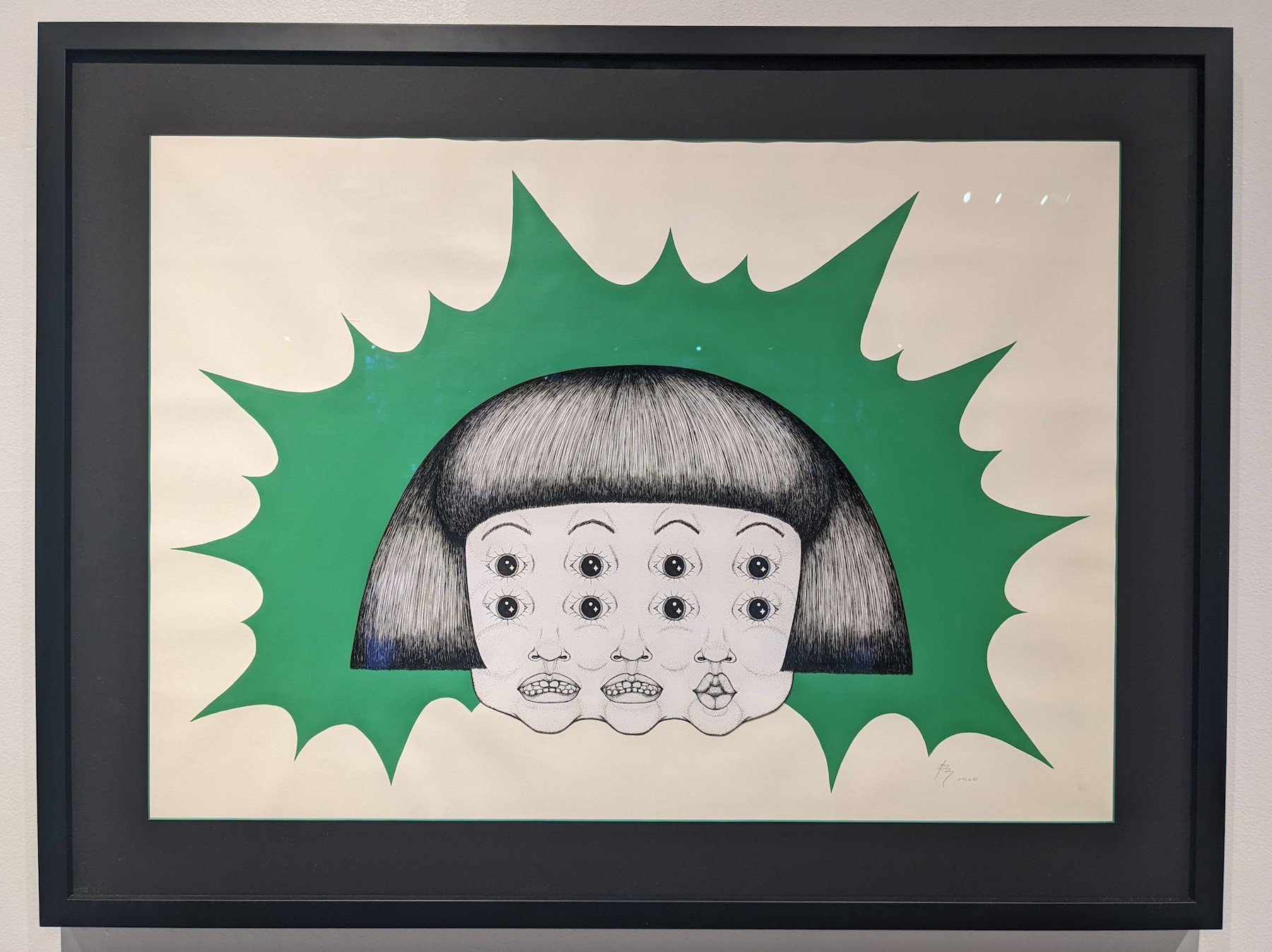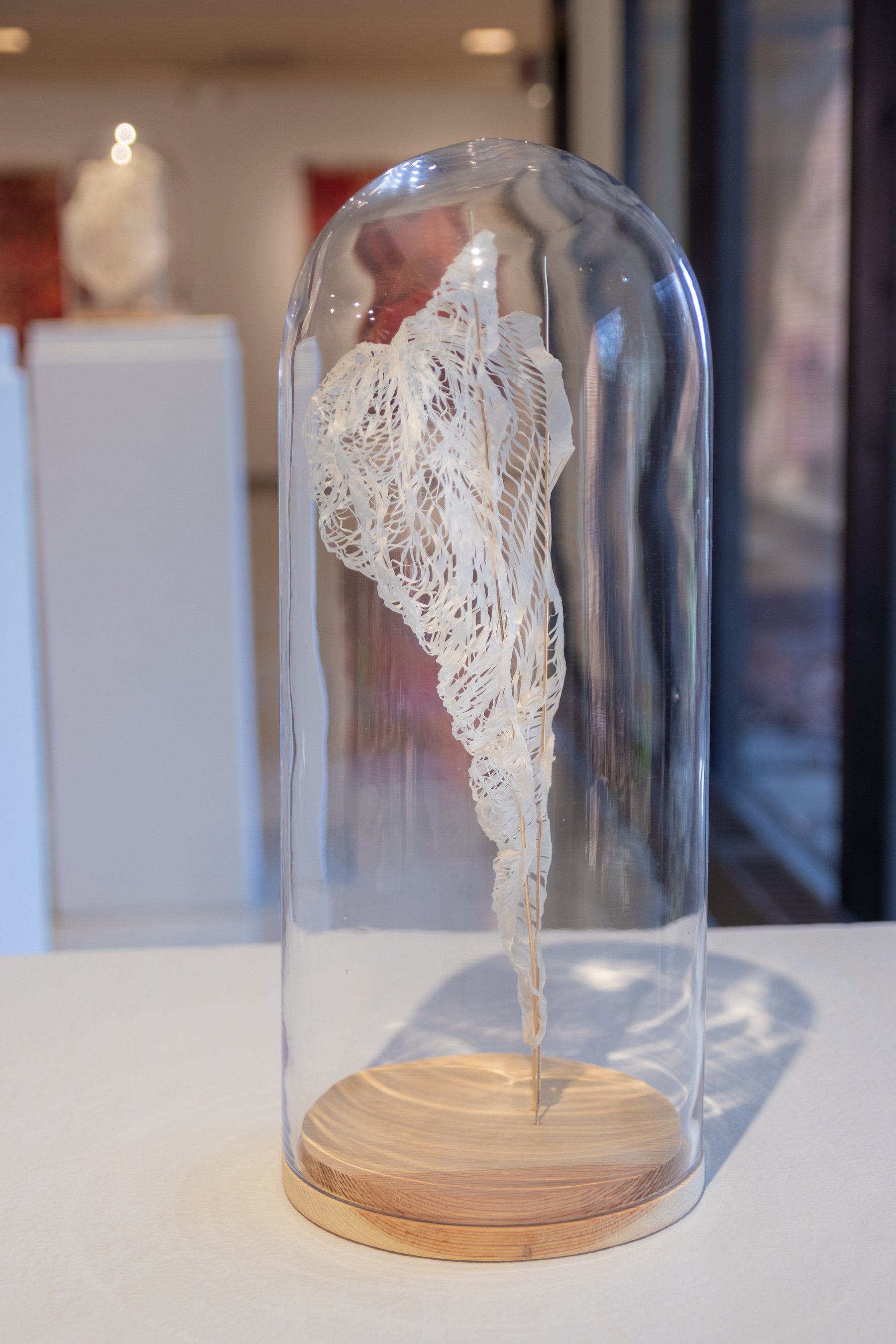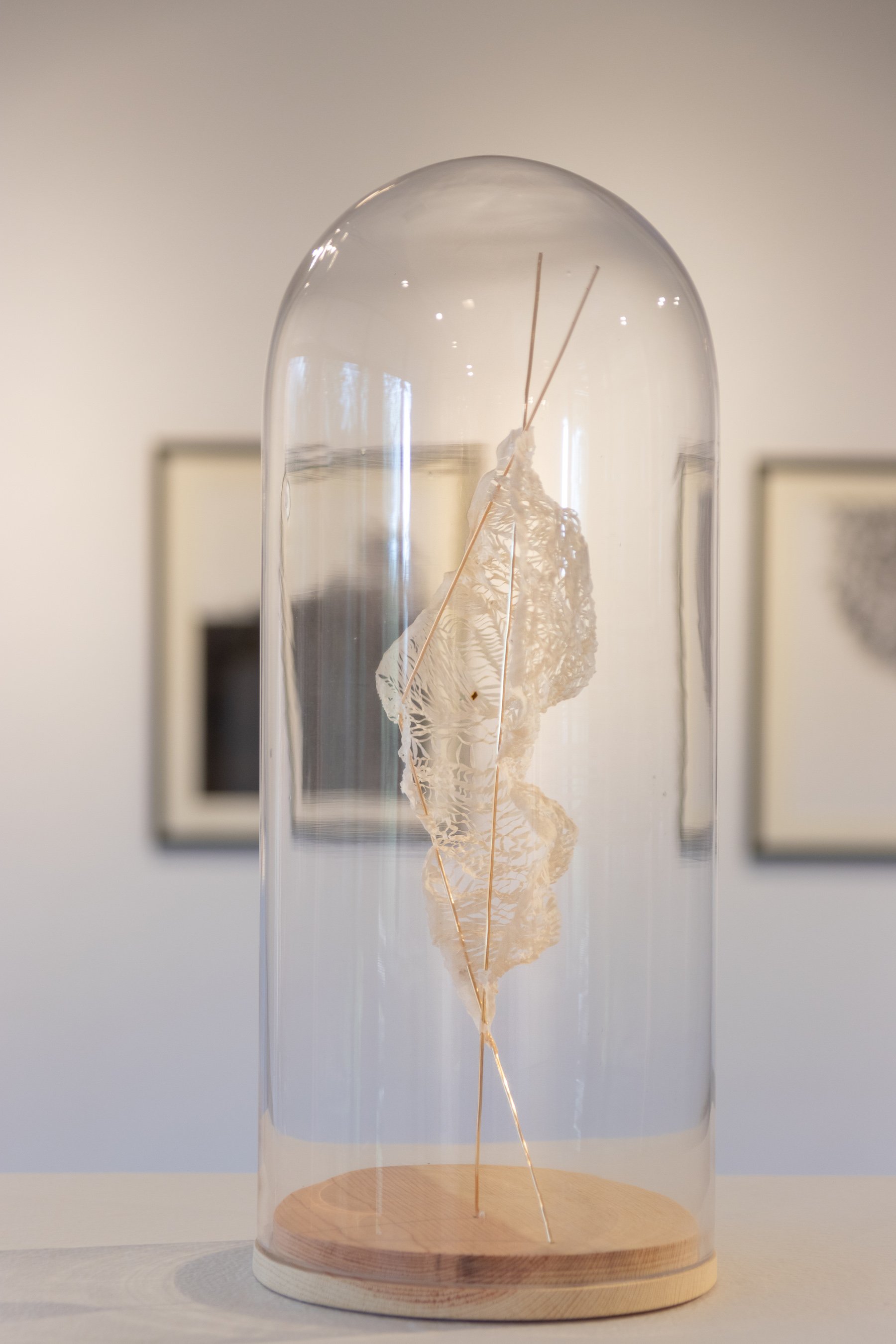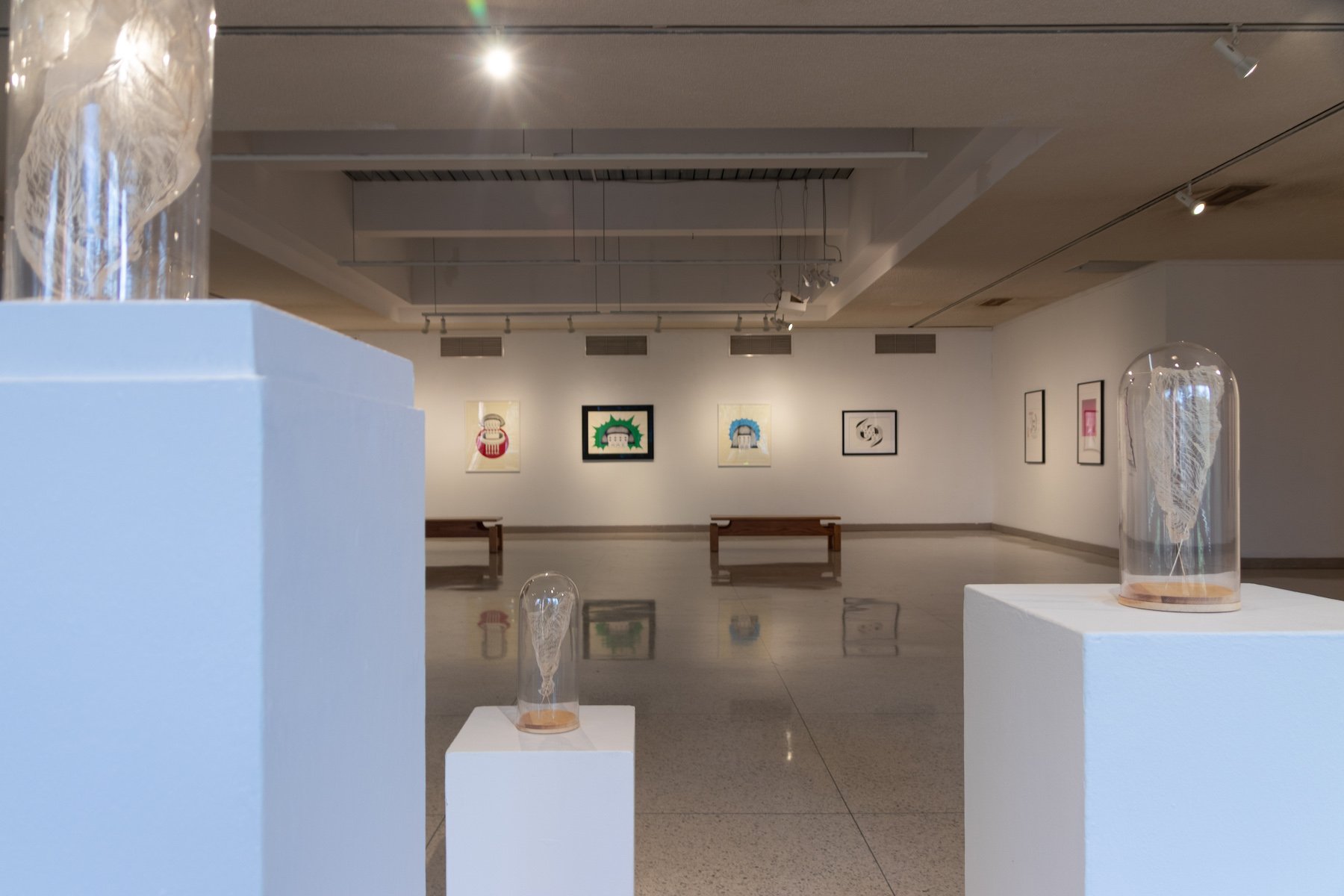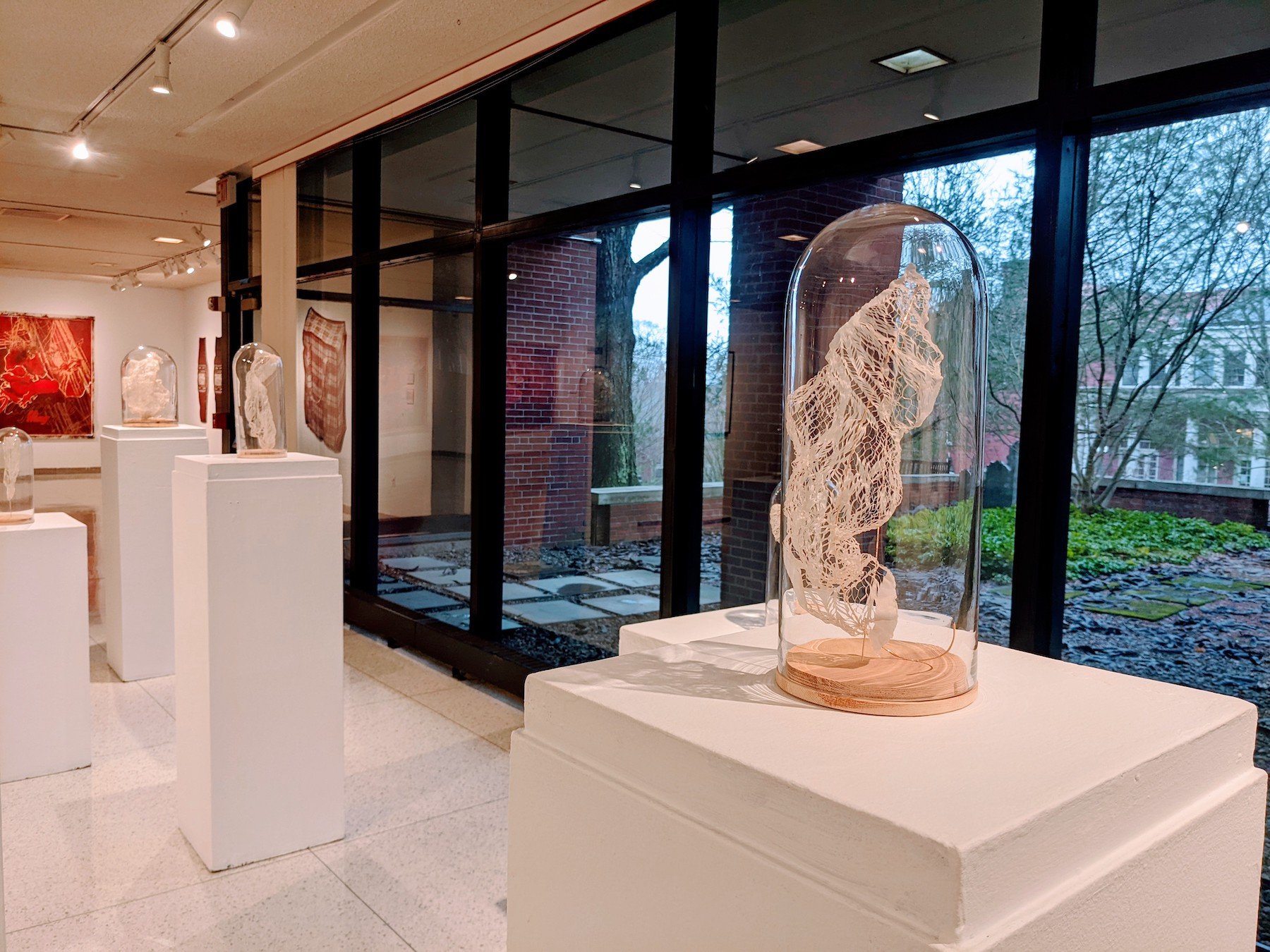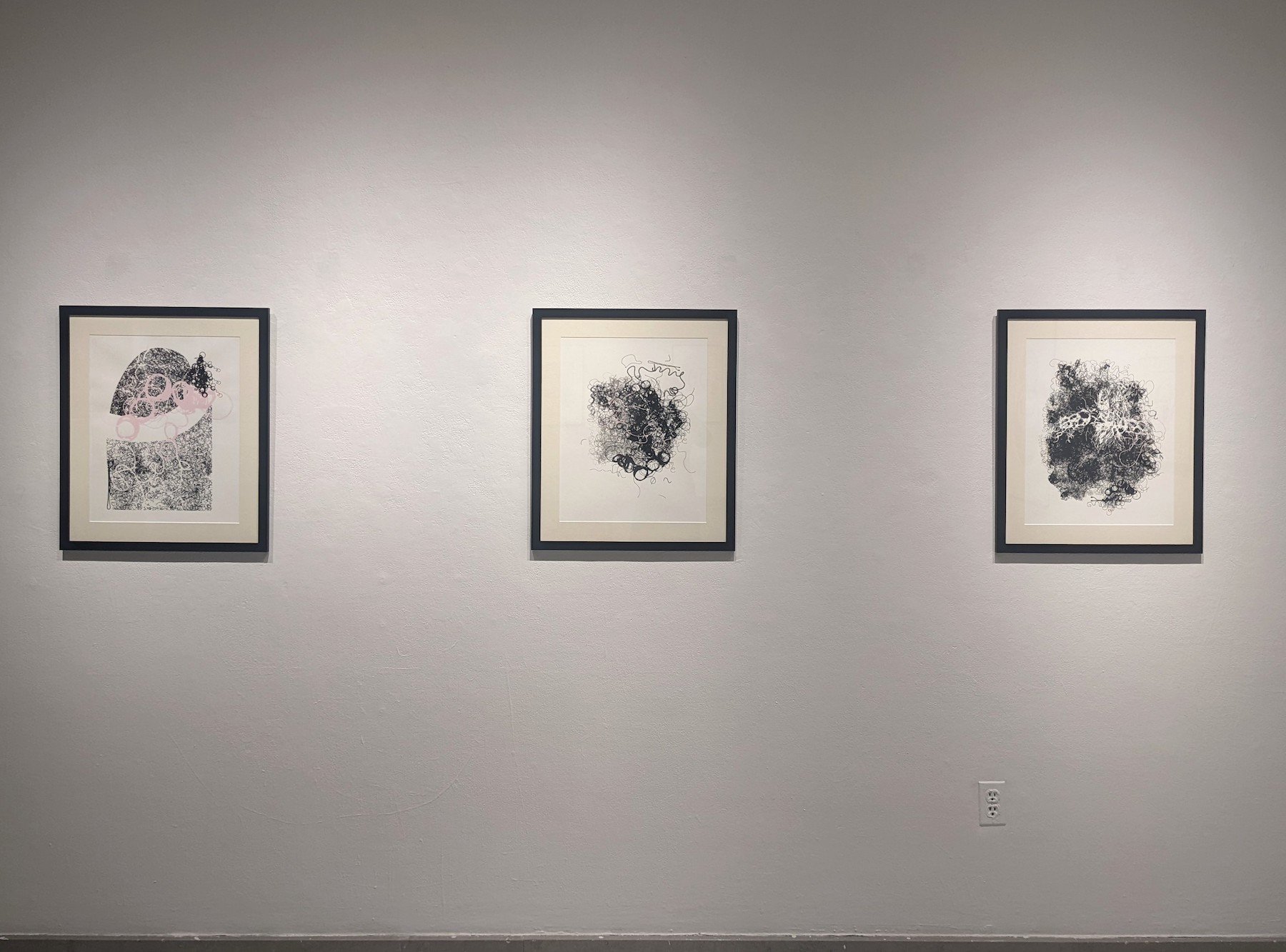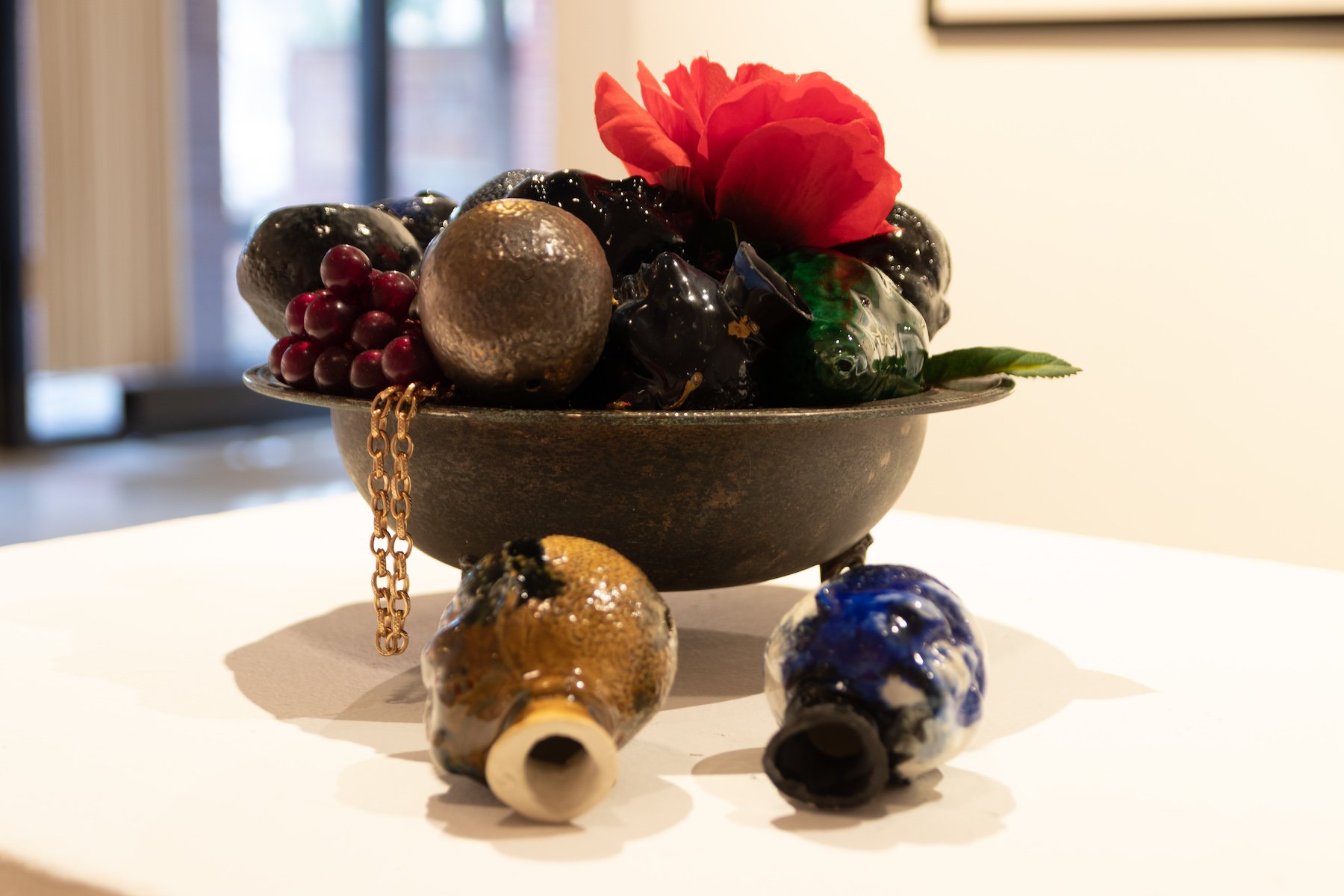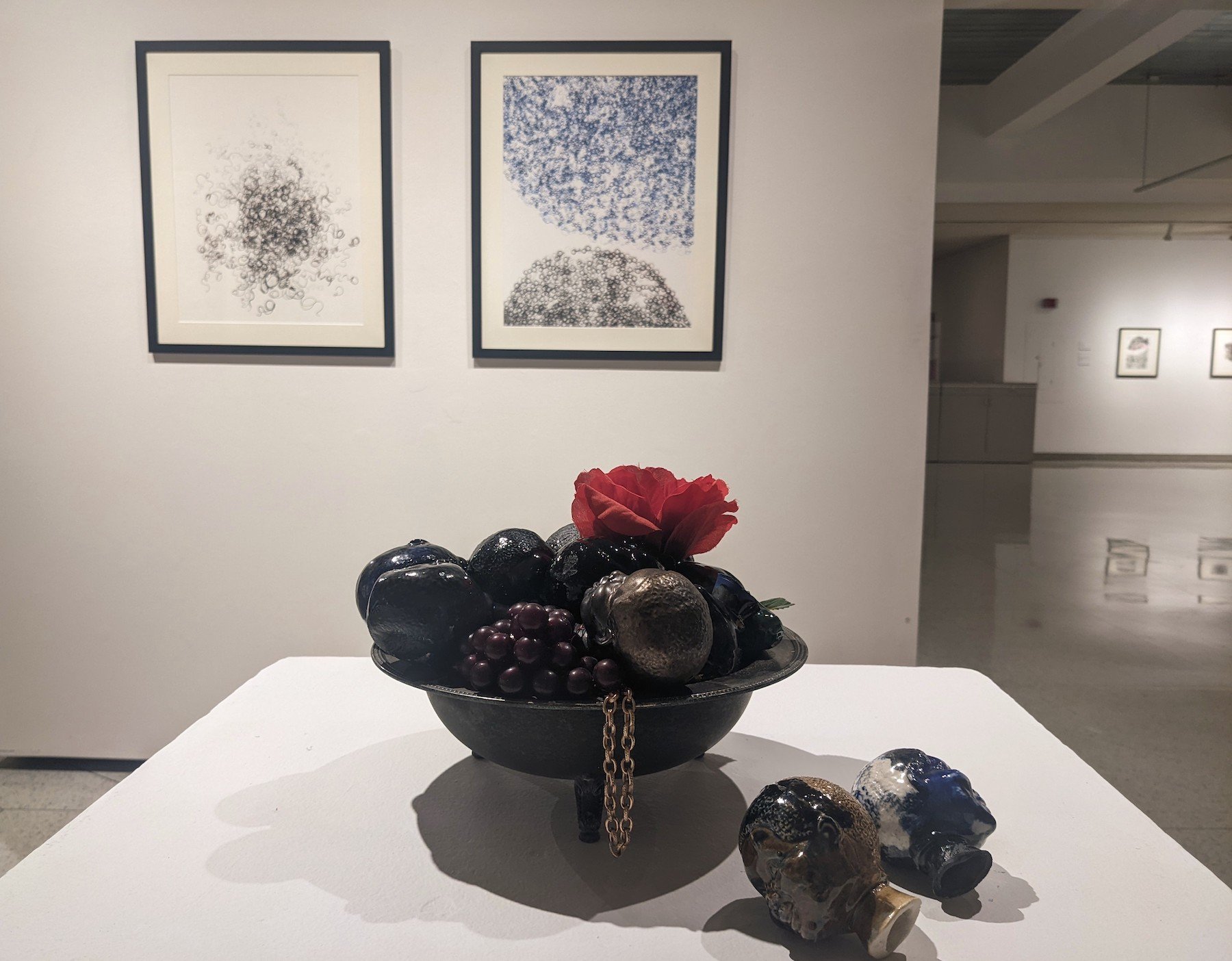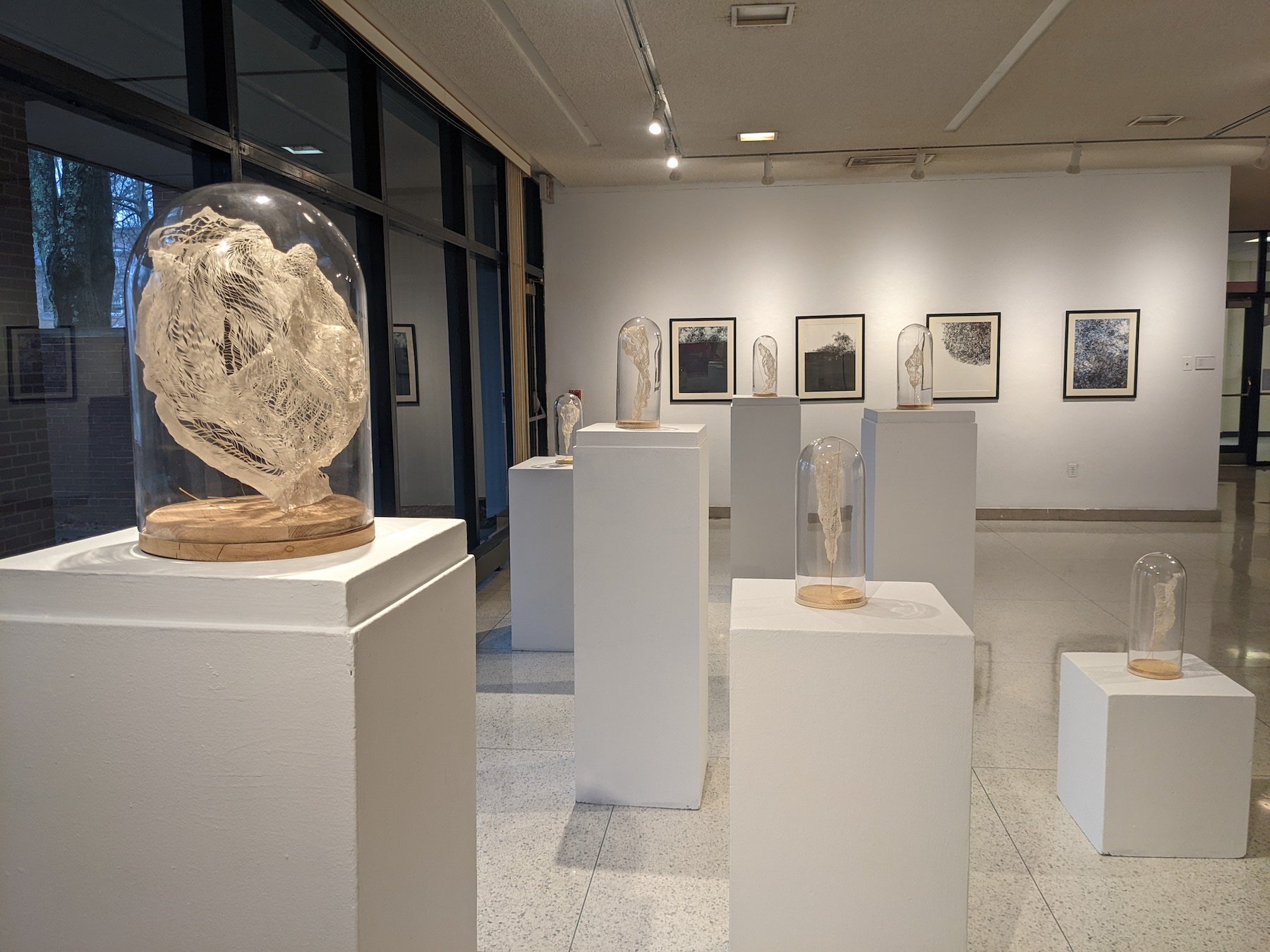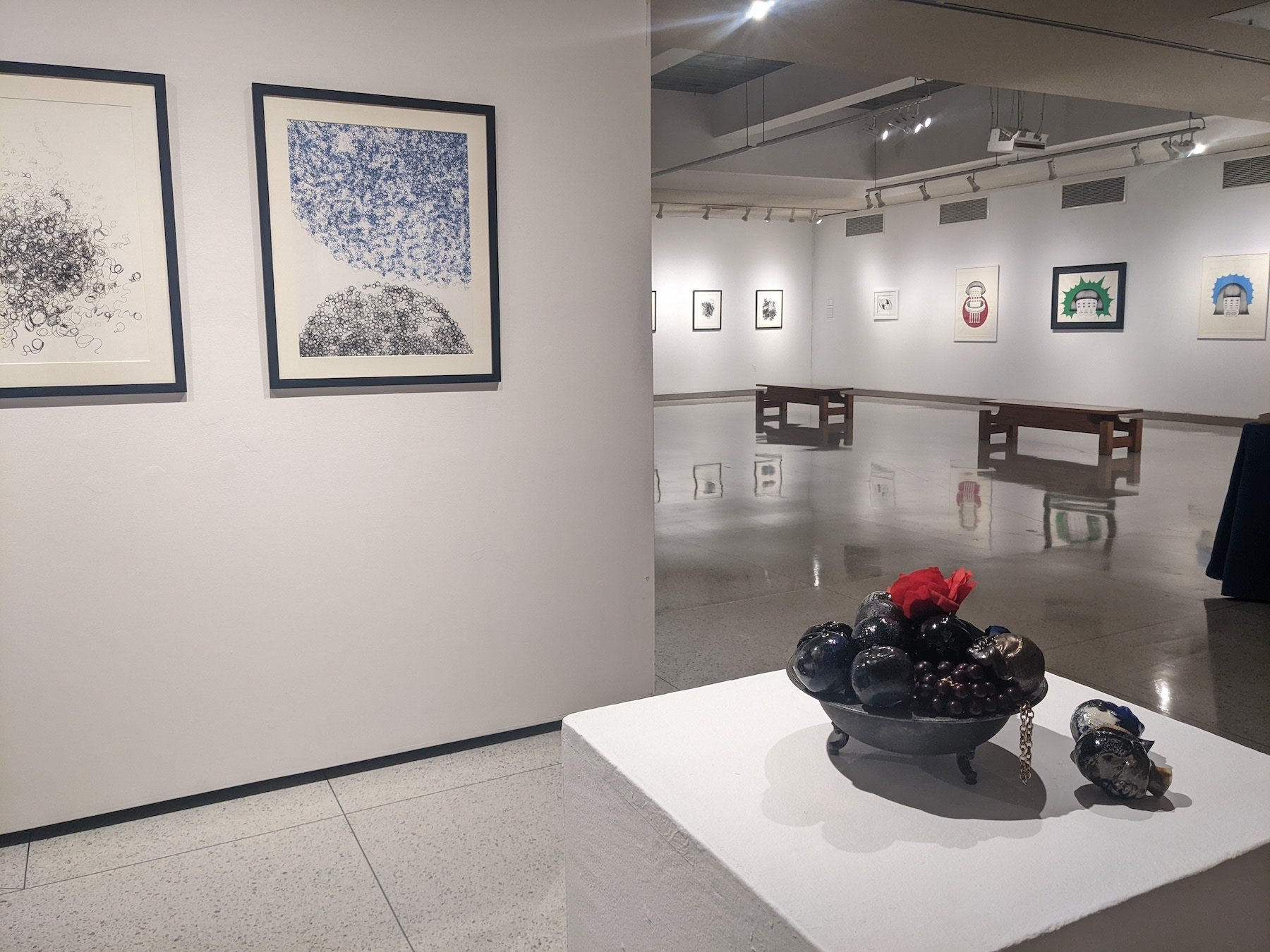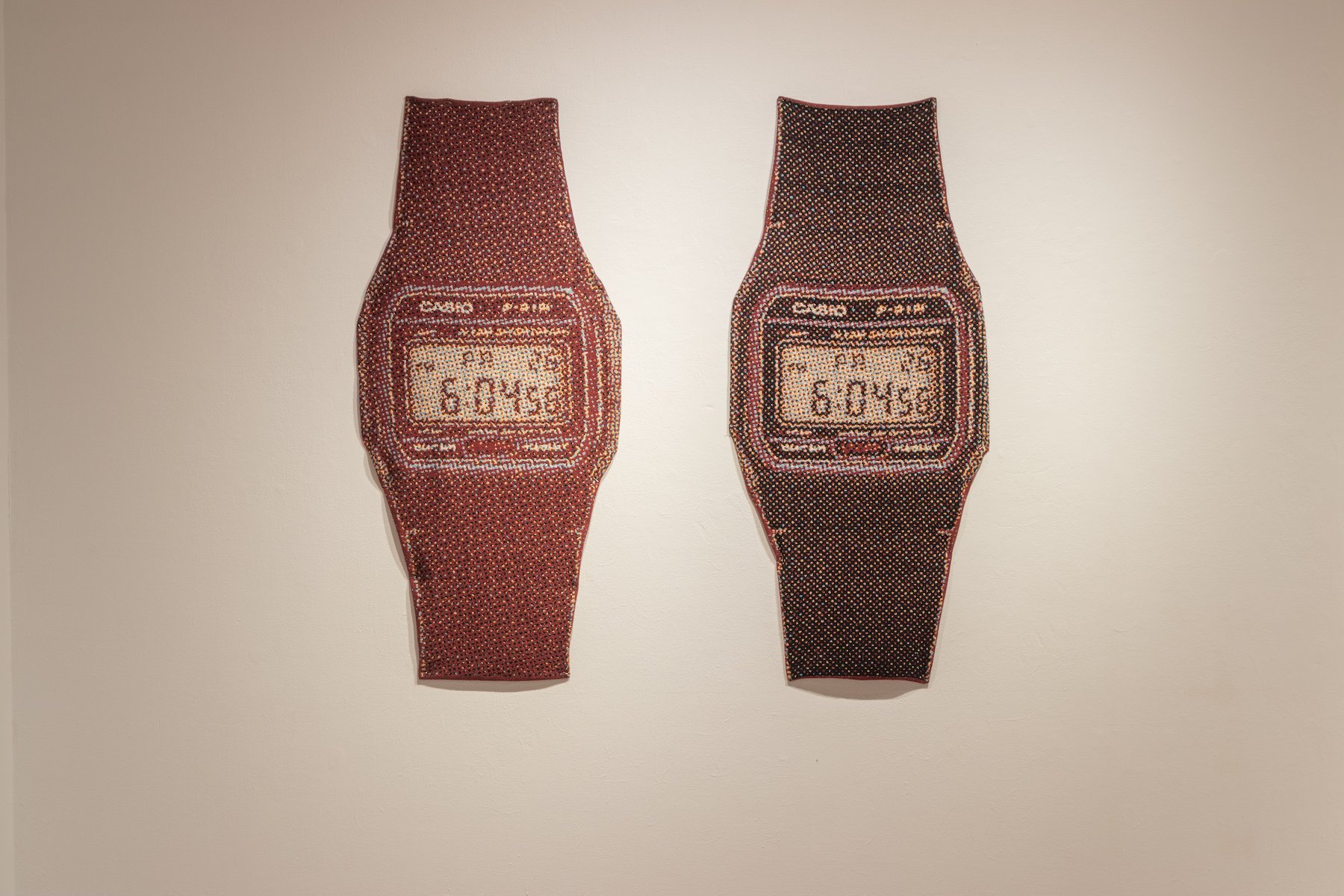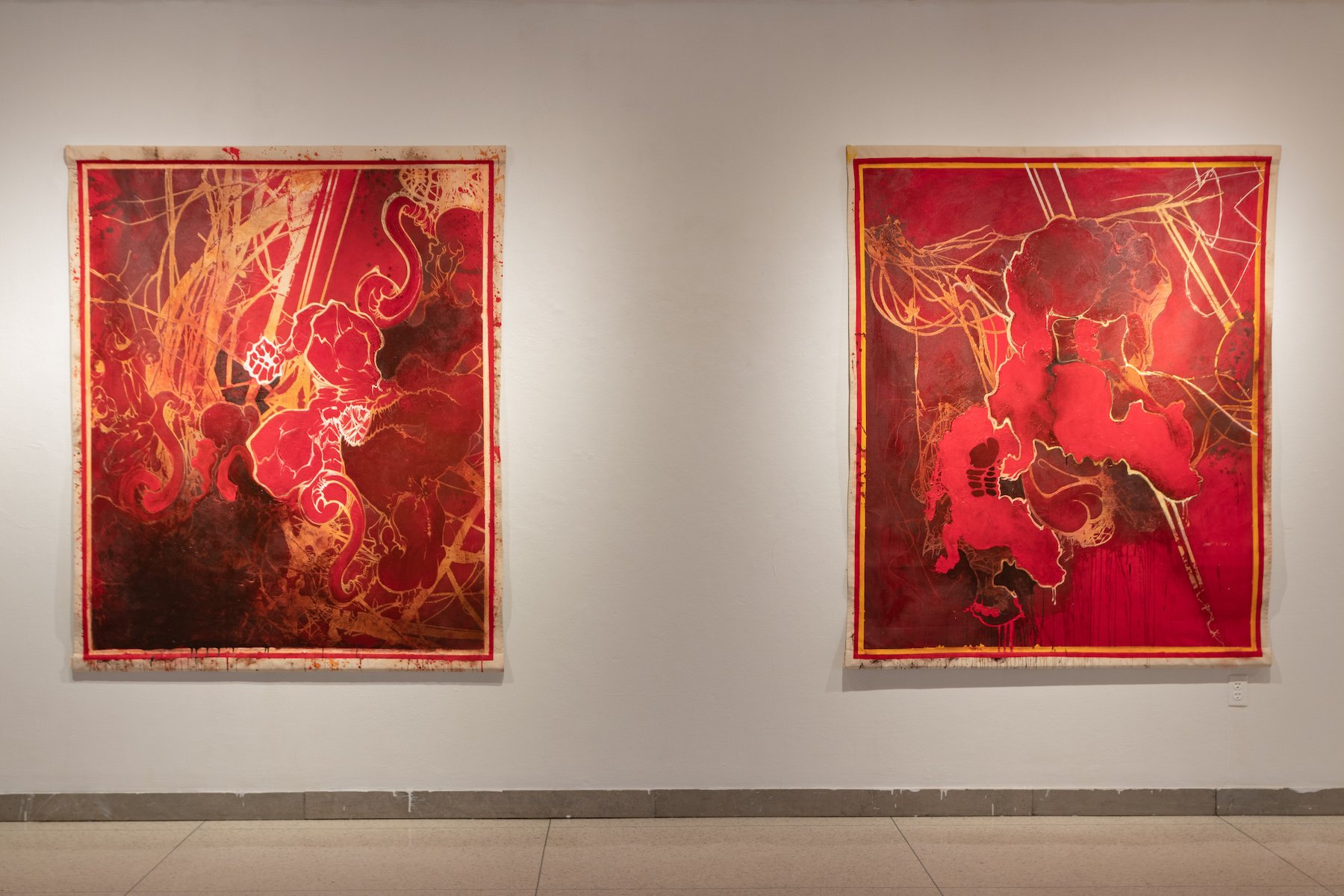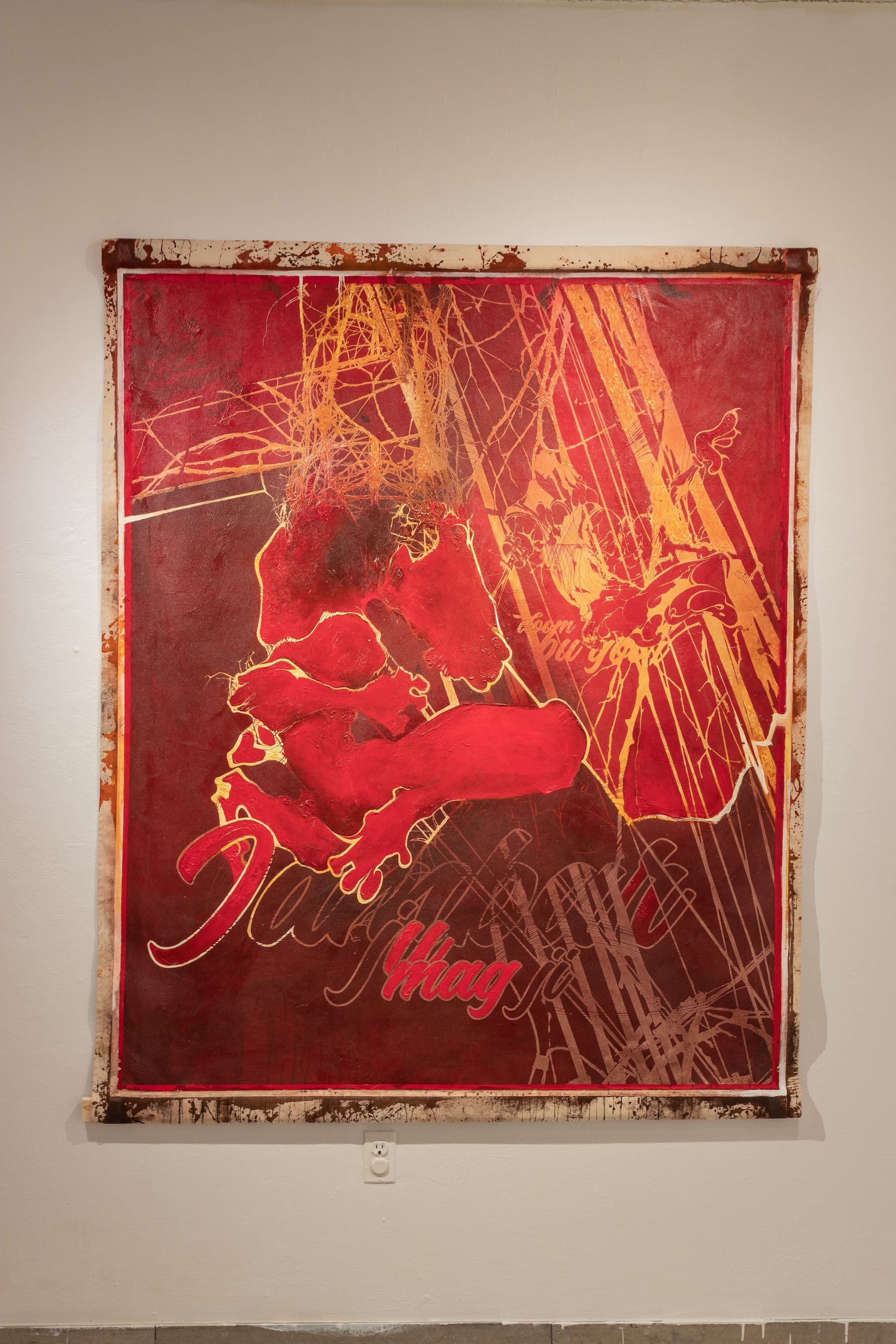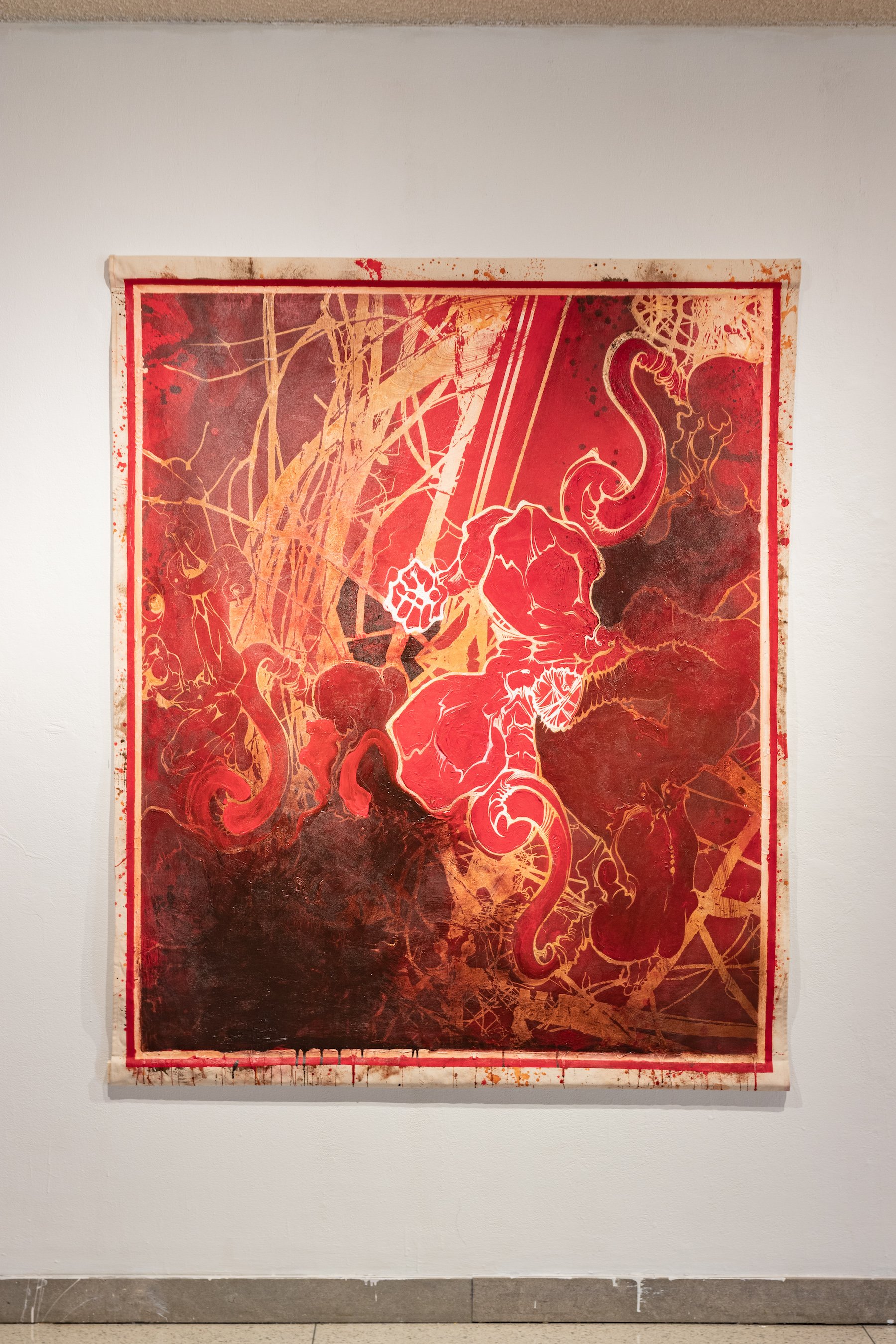Making Space
Gonzalo Hernandez, Sharon norwood, Hiromi Moneyhun, STephon Senegal
on view March 1 - april 2, 2022
Making Space brings together four artists who participated in the Erie Arts & Culture and Long Road Projects visiting artist residency program in 2020 and 2021. The diverse practices of Gonzalo Hernandez, Sharon Norwood, Hiromi Moneyhun, and Stephon Senegal conjure folklore into new mythologies and infuse traditional, material techniques—Peruvian weaving, Japanese paper-cutting—with contemporary content.
Hernandez, Norwood, Moneyhun and Senegal return to Northwest Pennsylvania to showcase artworks impacted or inspired by their experiences in the surrounding regional community. They create space for narratives, stories, and images from a global range of cultures—past and present. This exhibition works from the premise that art is a practice of making space, from literal spaces of display to symbolic acts of forging community.
Save the date! Tuesday, March 15, 6:30-7:45 pm. Virtual artist panel discussion, featuring artists Gonzalo Hernandez, Sharon Norwood, Hiromi Moneyhun, and Stephon Senegal in conversation with Patrick Fisher, Executive Director, Erie Arts & Culture. This panel takes place on Zoom: https://allegheny.zoom.us/j/93524272352
installation views
artist bios & texts
Gonzalo Hernandez studied at the Escuela de Artes Visuales Corriente Alterna, and he holds an MFA and MA from the Savannah College of Arts and Design in Fibers and Painting. Recent solo and group exhibitions include Almost There at Laundromat Art Space, Miami (2021); SIH at The End project space with Todd Schroeder, Atlanta (2021), '):)' at SCAD Museum of Art, Savannah (2020); Java at La Vitrina de la Oficina m20 Hotel Savoy, Lima (2019), and many more. Hernandez was part of the first Chuquimarca Residency program in Summer 2020, Longroad Projects Erie Residency in November 2020, Kate-Ferri Projects in November 2021. He is also co-founder of Abrir Galeria, an independent gallery project that focuses on Latin American young artists.
Gonzalo Hernandez, Untitled (6:04), Amex, Bag 1, Bag 2, 2022. Jacquard weavings.
Wall text: Assorted objects—wrist watches, an American Express card, carry-on bags—convey themes of travel, time, and mobility. Gonzalo Hernandez displays trappings of an artist engaged in a global art world who maintains a semi-nomadic lifestyle in order to fully participate. Based on a photograph of the artist’s own watch, a pair of Casios echoes a well-known artwork featuring two clocks by the late Felix Gonzalez-Torres. The legacy of Gonzalez-Torres is especially prominent in Miami, where Hernandez lives. The American Express card evokes economic privilege and purchasing power, but also anxiety from using debt to finance materials, projects, and travel. The way in which a credit score can alternately empower or disenfranchise an individual is a uniquely American phenomenon, one that the artist finds disconcerting following his relocation from Peru to the United States. The woven fabric surfaces refer to traditional Peruvian textiles, and Hernandez infuses the medium with contemporary subject matter that resonates with his own position as an artist navigating multiple cultures.
Sharon Norwood is an interdisciplinary artist whose work spans media including painting and ceramics. Norwood is a graduate of Florida State University with an MFA in studio Art, and she holds a BFA in Painting from the University of South Florida. Norwood’s work has been exhibited throughout the United States, and internationally in Canada, South Korea, Jamaica and Germany. She is the recipient of numerous honors including the Exceptional Opportunity Award, the Andy McLaughlin Memorial Award and the Jim Boone Endowed Art Scholarship from Florida State University. In 2016 Norwood received the Raymond James Gasparilla Festival of the art’s emerging artist recognition and the Creative Loafing Tampa Bay’s Best of the Bay Emerging Artist recognition. She has participated in national and international residencies including the Vermont Studio Center (VSC), PILOTENKUECHE, Watershed Center for the Ceramic Arts, ROKTOWA and the Jacque and Natasha Gellman Fellowship at the Virginia Center for the Creative Arts (VCCA). Sharon maintains her studio practice in Savannah, Georgia.
Wall text: Elinore is the birth name of renowned singer Billie Holiday, who recorded the best known version of Strange Fruit in 1939. With the wrenching lines, “Southern trees bear a strange fruit; Blood on the leaves and blood at the root,” the song eulogized victims of racially-motivated lynching in the American South. Piled in and around a decorative bowl, the ceramic heads refer to histories of racial violence and the commodification of Black bodies. Juxtaposed with the figurative imagery in Elinore, the looping lines in nearby drawings Knowing and Home Economics suggest the organicism of the body and the curls of natural hair–a powerful signifier of Black identity. In abstract compositions on view throughout the gallery, Norwood uses the curly line to build forms of varying densities, resulting in compositions that oscillate between abstract mark making and more corporeal or environmental associations.
Sharon Norwood, Elinore, 2022. Mixed media ceramic assemblage. Wall: Home Economics, 2020; Knowing, 2021. Ink on paper.
Hiromi Mizugai Moneyhun is a papercut artist, born and raised in Kyoto, Japan. She moved to Jacksonville, Florida, in 2004. Moneyhun has been written about in numerous publications, including the Florida Times Union and the Huffington Post. She has exhibited in group and solo shows throughout Florida, in New York City, London, and in Bentonville, Arkansas, in the Crystal Bridges Museum of American Art’s 2014-15 show, State of the Art: Discovering American Art Now. Moneyhun began drawing at a young age: with no formal art training, she developed a singular artistic voice that combines traditional Japanese visual art forms with the super-modernity that characterizes Japan’s biggest cities. Moneyhun’s three-dimensional cut paper works are the result of a multistep process that generates compositions both amusingly lighthearted and startlingly alive.
Wall text: Hiromi Moneyhun combines traditional Japanese techniques and materials with contemporary subject matter, conveying what she describes as the “super modernity” that characterizes today’s major Japanese cities. Untitled drawings feature figures loosely inspired by manga characters, made unsettling and surreal with multiple coalescing faces, features, and limbs. The visages register emotions that range from concern to anguish, expressing feelings many have experienced during the global Covid-19 pandemic. In one composition, a figure stands inside a children’s inflatable water toy, duplicated to suggest a crowd, even though the body remains singular. Floating in an indeterminate red sphere against only negative space, the figure’s isolation is palpable. This melancholy composition aptly conveys a nostalgia for times when friends could gather at will.
Residuals reflect Moneyhun’s deep engagement with the art of Japanese paper-cutting. A technique for building form and images from cut paper, paper-cutting was adapted from China in the seventh century. Residuals developed from Moneyhun’s time as a visiting resident in Erie, PA. The delicate, hand-cut paper sculptures evoke the nebulous fall webworm nests often suspended in trees near Lake Erie’s Presque Isle beaches.
Hiromi Moneyhun, Untitled I, 2020
Stephon Senegal reconfigures organic and mechanical elements to create visual odes to the syncretistic themes that informed his youth in Lafayette Louisiana. His art practice is an examination of insurgency and spans across several mediums. Senegal works with assemblage and painting and employs amalgamation as a driving methodology. The tenets of Creolization and the embrace of its subversive nature underpin Senegal’s practice. In both his sculptural and painting compositions he reconfigures human, animal and machine parts as visual sonnets to Creole mythology. Senegal holds an Undergraduate degree from Howard University in Washington D.C. and an MFA from the Maryland Institute College of Art in Baltimore, Maryland. The artist lives and works in New York City.
Wall text: Stephon Senegal combines painterly gestures with allusions to fabled hero’s journeys. Inspired by West African folklore, forms loosely allude to hybrid human-animals. While precise narrative details remain intentionally obscure, imagery, the deep red palette, and expressive marks suggest themes of struggle, conflict, and overcoming. The artist renders fragments of text in Wolof, a language spoken in Senegal, Mauritania, and The Gambia. For viewers unfamiliar with the language, the text becomes an abstraction, challenging the ways in which artworks are often understood through a Euro-American lens. Reflecting the artist’s interest in syncretism—the amalgamation of disparate belief systems and cultures—a wide range of other source materials inform the paintings: African pattern making, French Baroque painting, Abstract Expressionism, and medieval mappa mundi, or world maps that interpreted the earth in geographical and spiritual terms.
Stephon Senegal, Untitled, 2022. Acrylic and mixed media on canvas.
The Allegheny Art Galleries receive state funding through a grant from the Pennsylvania Council on the Arts (PPA), a state agency funded by the Commonwealth of Pennsylvania and the National Endowment for the Arts, a federal agency. PPA is administered in this region by Erie Arts & Culture. This exhibition was additionally supported with funds from Erie Arts & Culture through a special grant from the Erie Community Foundation.


